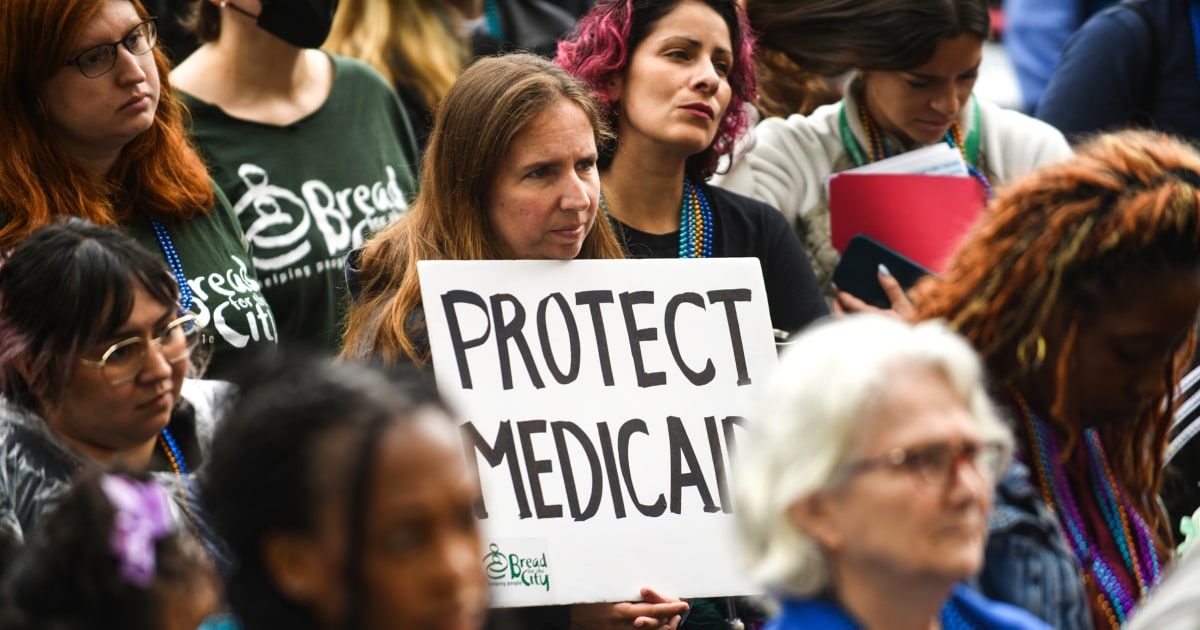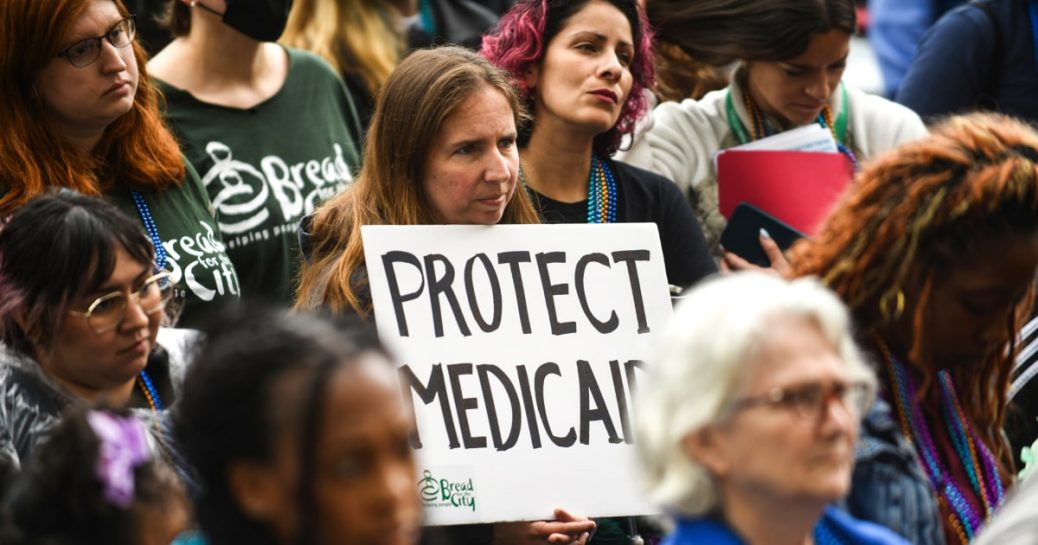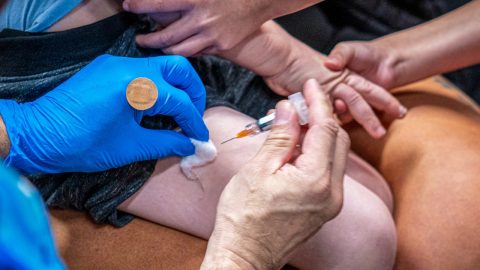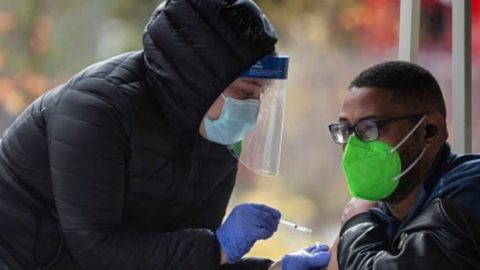
The proposed Medicaid cuts in the House Republicans’ sprawling domestic policy bill could cause an estimated 7.6 million Americans to lose health insurance, leading to thousands of preventable deaths, according to an analysis published Monday in the Annals of Internal Medicine.
The study estimated the cuts could cause nearly 2 million people to lose their primary doctor, 1.3 million people to not fill medications they need and 380,270 women to skip a mammogram. More than 16,600 people could die as a result of losing access to or forgoing care, the researchers estimated.
“Patients who go without care because they cannot afford it often get sicker and sicker, until they end up with chronic illness,” said lead study author Dr. Adam Gaffney, a critical care physician and assistant professor at Harvard Medical School.
The reconciliation bill, which passed the House in late May and is working its way through the Senate, proposes deep cuts to federal Medicaid spending — at least $625 billion over 10 years, according to the study.
“Parts of the bill that seem innocuous, that seem like they may be aimed at cutting fraud and abuse, will disenroll people who should be on Medicaid under the stated criteria,” said Dr. Rachel Werner, executive director of the Leonard Davis Institute of Health Economics at the University of Pennsylvania, who was not involved in the analysis. “It’s not just about saving dollars and cents, it’s costing lives.”
Of the Medicaid cuts included in the bill, the analysis highlighted the three that would have the largest impact on people losing health insurance: establishing work requirements, limiting states’ ability to collect taxes from Medicaid providers and ending a Biden-era rule that streamlined Medicaid enrollment.
Several smaller cuts in the bill, including penalizing states that used Medicaid funds to cover undocumented immigrants, brought the total to an estimated 7.6 million people becoming uninsured. (The estimate assumes that while closer to 10.3 million people would lose their Medicaid coverage, some would find other health insurance — though the authors noted this assumption “may be overly optimistic.”)
The report was based on figures from the House Budget Committee, analyses from the Congressional Budget Office and past studies on Medicaid.
Gaffney noted that the work requirements in the bill passed in May were wider than what the analysis originally estimated, and could lead to the greatest number of deaths.
Michael Shepherd, an assistant professor of health management and policy at the University of Michigan School of Public Health, agreed that the work requirements are a particularly worrying part of the bill.
“They sound reasonable for folks, if you’re able to work, you should be working,” said Shepherd, who was not involved in the new analysis. “The majority of people on Medicaid are already working and most of those who are not are either in a caregiving role or are disabled and cannot work.”
If federal lawmakers do pass work requirements, people would need to routinely submit proof that they are employed for a specific number of hours. It’s unclear how often this would be, but the process would create more obstacles for people to get care, particularly for people who work seasonally or who are between jobs when the work requirement documentation is due, Shepherd said.
“It’s a good example of kicking people while they’re down or putting roadblocks in the way of people who are already doing what they are supposed to,” he said. “The last thing you want to do for someone who is in a financially precarious position is to take away their health care.”
Georgia and Arkansas have already experimented with implementing work requirements for Medicaid recipients in their states. Georgia’s is still in effect, but a judge reversed Arkansas’ requirement in 2019, about a year after it went into effect.
Shepherd said what happened in these states can act as a warning for what could come of federal work requirements for Medicaid recipients: “What we observed was a large number of people not being able to enroll in Medicaid, even though they qualify and they are working, and an increase in administrative costs.”
A ripple effect
Dr. Steven Woolf, a professor of family medicine and population health at Virginia Commonwealth University, said potential preventable deaths aren’t his only concern.
“There will be many Americans who develop chronic diseases that they will have to live with for the rest of their lives,” said Woolf, who was not involved with the analysis. “Someone who has signs of a stroke and doesn’t seek immediate care because they don’t have access to Medicaid will live with neurological effects for the rest of their lives.”
Woolf said Medicaid cuts would be compounded by cuts to SNAP benefits — which are also in the bill — as well as cuts to programs, funding and staff at the Centers for Disease Control and Prevention.
“The health consequences of this are huge,” he said.
Werner said she worries that the cuts would cause confusion for people who are still eligible and enrolled in Medicaid, potentially causing them to believe they or their child has lost coverage.
The disenrollment of kids is unlikely, she said: “What is more likely is that when parents become disenrolled they mistakenly think their kids will be disenrolled.”
Another provision in the bill would delay a mandate requiring staffing minimums at nursing homes, which Werner said could lead to additional deaths among residents.
The ripple effects would also affect the health system at large, especially in rural areas, and could lead to loss of care and deaths even among people with private insurance, Shepherd said.
Medicaid cuts would strain rural hospitals, which would be left to increasingly absorb the cost of care for uninsured people who cannot pay their medical bills. (Even without the cuts, one-third of all rural hospitals are at risk of closing due to financial strains, according to the Center for Healthcare Quality and Payment Reform.)
“We are looking at substantial numbers of rural health clinics and hospitals closing,” Shepherd said. “If you are living in a rural community, there is a pretty decent chance these cuts will cost you your local access to a hospital regardless of what insurance you have.”
Shepard said that while the authors did a good job in their estimations, the numbers do not take into account these spillover effects.
Woolf agreed.
“We know a lot of these cuts will claim lives,” he said. “Trying to quantify exactly how many lives is challenging.”










Recent Comments